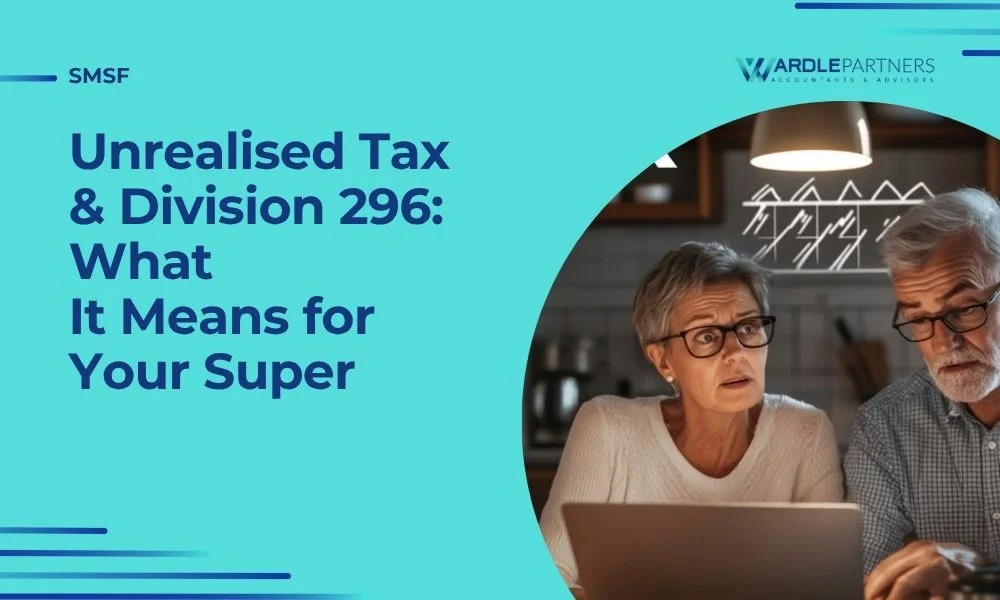Introduction: A Tax Revolution You Didn’t See Coming
Australia's proposed Division 296 is shaking the foundations of superannuation rules. No longer confined to taxing money you've withdrawn or sold, the ATO now wants a slice from the unrealised growth in your super — assets you haven’t even cashed in yet. For those with $3 million+ balances, this may hit hard. At Manika FinTax Solutions, we break down what this means — simply, clearly, and with real-world examples — plus smart strategies to minimise the blow.
1. What Is Division 296?
Introduced via the Treasury Laws Amendment (Better Targeted Superannuation Concessions) Bill 2023, Division 296 adds a 15% top-up tax on annual super "earnings" (growth) tied to the portion of your balance above $3 million
Key aspects:
-
It counts unrealised gains — paper increases.
-
Applies to the share of earnings linked to balances over $3M.
-
Taxed annually to individuals (or allocated from the fund).
-
Losses in one year can be carried forward, not refunded
2. Why It’s Controversial
-
Cash flow risk: You could owe tax on gains you haven't converted to cash
-
Policy precedent: Critics warn it sets a troubling lead — taxing unrealised gains now could invite similar rules on property, equity, or your home
-
Illiquidity concerns: Especially for SMSFs holding property or private assets — you might have value on paper, but no way to pay the tax without selling
Industry voices, including the Tax Institute and SMSF Association, strongly oppose it
3. How the Tax Is Calculated
Steps for calculating Division 296:
| Step | Description |
|---|---|
| End-year TSB + withdrawals – contributions – start-year TSB |
| 2. Find proportion above $3M | (End TSB – $3M) ÷ End TSB |
| 3. Taxable earnings | Annual earnings × Proportion |
| 4. Division 296 Tax | Taxable earnings × 15% |
Example: Anne
-
Start TSB $3.2M → End TSB $3.4M, no flows
-
Earnings = $0.2M
-
Proportion = (3.4–3.0)/3.4 ≈ 11.8%
-
Taxable earnings ≈ $23.5k → Tax = $3.5k
Example: Bob
-
Start TSB $9M → End TSB $9.5M → Earnings = $0.5M
-
Proportion ≈ 68.4%, Taxable earnings = $342k → Tax ≈ $51k
4. Real-Life Scenarios
-
Joan, Retiree with High Super
-
Start TSB: $3.7M → End TSB: $4.1M
-
Net earnings: ~$350k
-
Proportion: ~26.8% → Taxable earnings: ~$94k → Tax ≈ $14k
-
-
Gail, with Income & Withdrawals
-
Start $5M → End $5.3M, +$150k pension withdrawal, +$30k contribution
-
Adjusted earnings ≈ $424.5k → Proportion ~43.4% → Tax ≈ $27.6k
-
-
John Faces a Loss
-
Start $3.2M → End $2.9M, withdrawn $400k
-
No tax – losses roll forward for future offset
-
These vividly show why cash-rich asset sales could be forced just to pay tax.
5. Strategic Planning Tips
-
Pre-30 June 2026 assessment: Finalise valuations — especially on illiquid assets
-
Move growth assets outside super: Earn interest or income rather than property/shares inside super.
-
Deplete TSB below $3M: Withdraw or redirect non-concessional contributions to avoid future tax.
-
Use family trust structures: Reallocate growth outside super through trusts or companies.
-
Hold off selling: Selling to pay for tax may trigger CGT and hurt your strategy.
-
Explore deferred strategies: Some propose paying when gains are realised — but not legislated yet
Each tactic requires careful timing and professional tax advice.
6. Broader Implications & Market Sentiment
-
This model may open the door for taxing unrealised gains in other assets
-
Wealthy Australians are considering relocating to avoid this burden
-
A Senate with Greens influence might see lower thresholds (e.g., $2M), increasing affected numbers
-
Pressure from industry bodies for bipartisan refusals on any taxes to paper gains
7. Should You Be Actioning Now?
Absolutely. Steps you can take today:
-
Valuation snapshot: Ensure your June 2025 asset valuations are robust.
-
TSB monitoring: Track balance fluctuations, contributions, withdrawals.
-
Professional planning: Consult a qualified SMSF/Super tax adviser to model options.
-
Stay informed: Final legislation may bring changes—keep updated.
Conclusion: Div. 296 Is a Game-Changer
Division 296 marks a massive policy shift: taxing asset growth you haven't realised. If you exceed the $3M threshold, ignoring this tax could wipe out hard-earned gains or force premature asset sales. At Manika FinTax Solutions, we believe clarity, strategic planning, and informed action can protect your retirement wealth — without surprises.
FAQs (for SEO & Clarity)
1. Who does Division 296 apply to?
Individuals with Total Superannuation Balances > $3M at fiscal year-end who experience growth.
2. Are losses refundable?
No. Losses are carried forward to offset future gains.
3. How often is the tax calculated?
Annually, based on your balance and market valuations at year end.
4. Can we defer payment until assets are cashed out?
Not currently. Tax applies on paper gains; no deferral to realisation yet.
5. What if my balance dips below $3M next year?
You pay nothing that year, and previous losses may offset future taxable earnings.
6. Do SMSF valuations matter more now?
Yes—especially with illiquid assets like property or private equity.
7. Can I restructure to avoid the tax?
Yes — but must be done carefully and legally, ideally before final legislation.
Call to Action
Facing Division 296 uncertainties? Reach out to Manika FinTax Solutions today for personalised, paid filing support — protect your super, safeguard your future.
Keywords: Division 296, unrealised super gains, super tax, ATO, SMSF, $3 million threshold, retirement planning, super strategy, tax planning, unrealised capital gains.



Post a Comment
0Comments